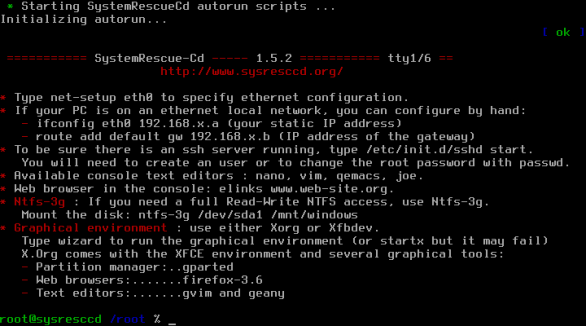

$ sudo e2fsck -l badsectors.txt /dev/sda10 Specifically for ext2/ext3/ext4 file-systems. The -l option tells the command to add the block numbers listed in the file specified by filename ( badsectors.txt) to the list of bad blocks. You will need to employ e2fsck (for ext2/ext3/ext4 file systems) or fsck command with the badsectors.txt file and the device file as in the command below. In case you discover any bad sectors on your disk drive, unmount the disk and instruct the operating system not to write to the reported sectors as follows. In addition, the results of the operation are stored in the file badsectors.txt by means of output redirection. In the command above, badblocks is scanning device /dev/sda10 (remember to specify your actual device) with the -v enabling it to display details of the operation. Then scan your Linux disk drive to check for bad sectors/blocks by typing: $ sudo badblocks -v /dev/sda10 > badsectors.txt
#LINUX DD READ ONLY SYSTEMRESCUECD PLUS#
The device can be a hard disk or an external disk drive, represented by a file such as /dev/sdc.įirstly, use the fdisk command with superuser privileges to display information about all your disk drives or flash memory plus their partitions: $ sudo fdisk -l A badblocks program enables users to scan a device for bad sectors or blocks.


 0 kommentar(er)
0 kommentar(er)
